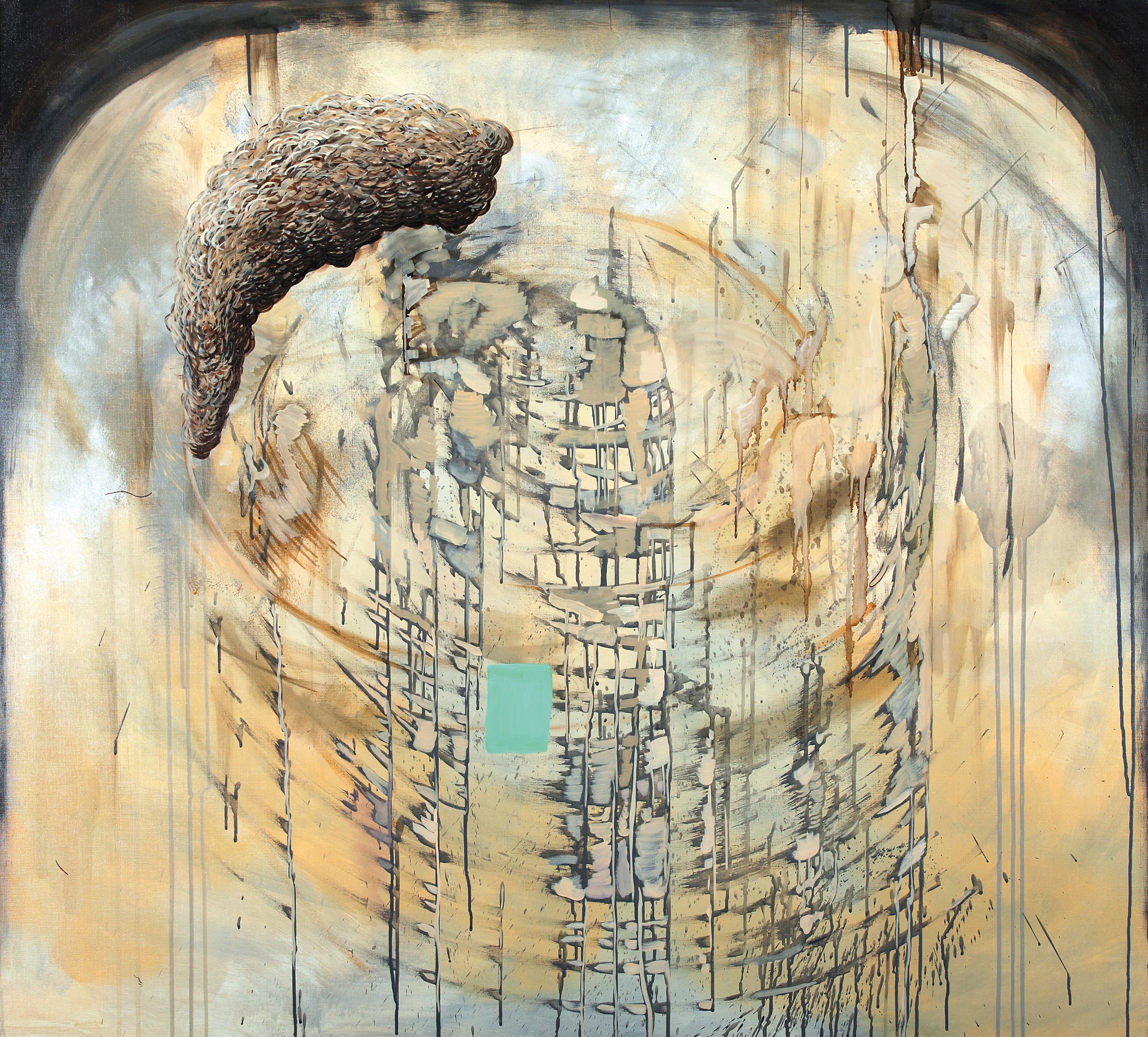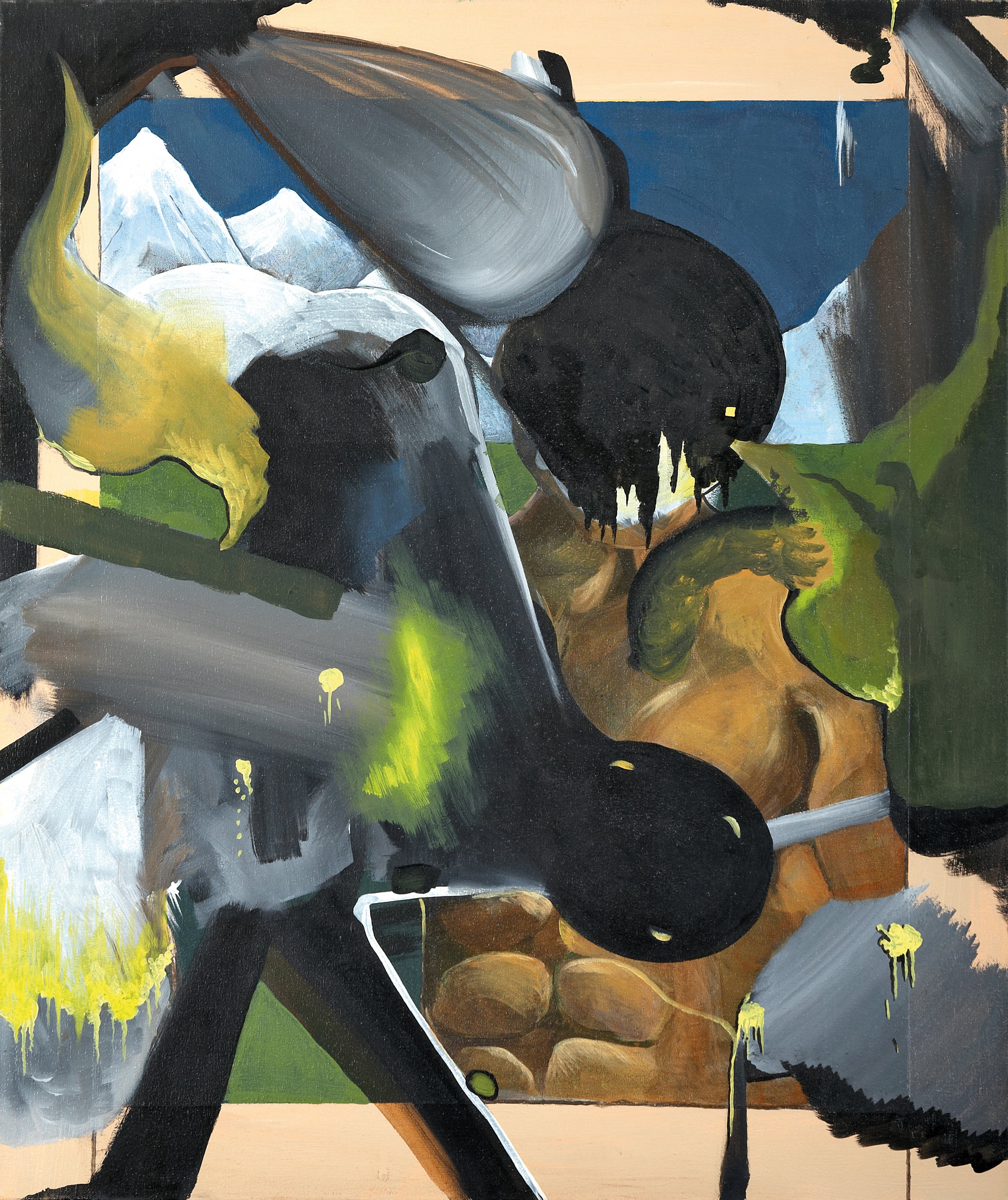Tymek Borowski
b. 1984, Warsaw
Painter, photographer, filmmaker. A painting graduate of the Academy of Fine Arts in Warsaw, he began by creating surrealist paintings alluding to Polish abstract painting of the second half of the 20th century, basically devoid of any theme or plot. He abandoned the classic medium for a time to co-manage the Czosnek (Garlic) experimental graphic arts studio (with Rafał Dominik and Katarzyna Przezwańska). He worked with Paweł Śliwiński in establishing the online Herostrates Gallery, which represented non-existent artists, and with Paweł Sysiak on the Billy Gallery project, which included animations explaining mechanisms controlling the art market and commenting on contemporary artists’ afflictions. Fully focused on painting in recent years, he creates abstract portraits of well-known persons and amorphous compositions. Winner of the Views 2013 Deutsche Bank Foundation Award and the Polityka Passport Award for 2015. He lives and works in Warsaw.
untitled
FSP ING 0086
Tymek Borowski’s paintings currently in the Foundation’s collection were created in the artist’s late university years, at a time when he was inspired by “bad art”, as he himself refers to Polish abstract painting of the 1970s. His works remain surrealist while not alluding to the subconscious or imagination. They were either inspired by newspaper photographs, or showcase fragments of everyday reality. One shows a discernible painting within a painting, a visualisation of evil, imperceptibly fascinating and attractive—hence the subtitle. The shaded upper corners of the other piece hint at a possibility of the artist viewing a baffling structure through the aperture of a camera obscura.
untitled
FSP ING 0087
Tymek Borowski’s paintings currently in the Foundation’s collection were created in the artist’s late university years, at a time when he was inspired by “bad art”, as he himself refers to Polish abstract painting of the 1970s. His works remain surrealist while not alluding to the subconscious or imagination. They were either inspired by newspaper photographs, or showcase fragments of everyday reality. One shows a discernible painting within a painting, a visualisation of evil, imperceptibly fascinating and attractive—hence the subtitle. The shaded upper corners of the other piece hint at a possibility of the artist viewing a baffling structure through the aperture of a camera obscura.

